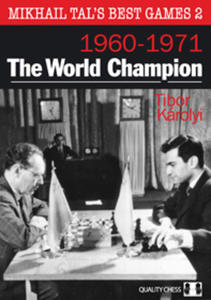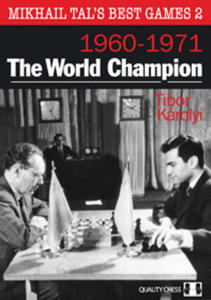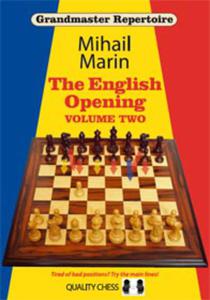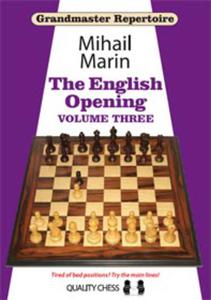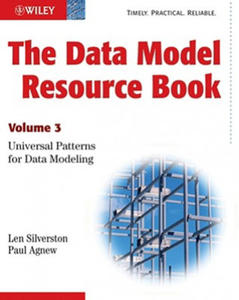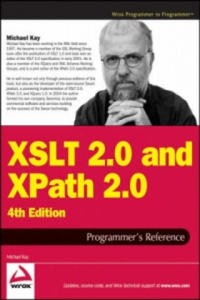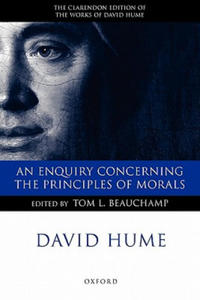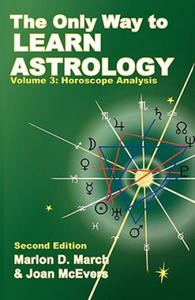krainaksiazek candidus or all for the best volumes 1 2 27841580
- znaleziono 14 produktów w 3 sklepach
Mikhail Tal's Best Games 2 - The World Champion by Tibor Karolyi
Szachy > Edycje w twardych okładkach
Wersja w miękkiej okładce. Książka wydana w jęz. angielskim In this, the second of three volumes, award-winning author Tibor Károlyi continues his groundbreaking exploration of Tal#8217;s sparkling career. Mikhail Tal is one of the most celebrated chess players of all time, and in 1960 he demolished Botvinnik to become the youngest ever World Champion at the time, at the age of twenty-three. This book examines some of the golden years of Tal#8217;s career, from 1960 to 1971. Despite losing his world title in a return match against Botvinnik, Tal remained one of the strongest, not to mention most popular and entertaining, players in the world. As in the first volume, cutting-edge chess analysis is complemented by the engaging story of Tal#8217;s life and career. The book also contains numerous anecdotes from famous players who share their memories of the Magician from Riga.International Master Tibor Károlyi was Hungarian Champion in 1984 and is renowned as both an author and a trainer. He won the Guardian Book of the Year prize in 2007.ISBN: 978-1-907982-79-8 - 360 pages - Published 22 July 2015Reviews"The notes to the games in the present volume, which traces Tal#8217;s journey from winning the World Championship to 1971 when he was still among the world#8217;s elite, are first rate. Readable, yet with plenty of concrete variations when needed, Karolyi#8217;s annotations are insightful...No chess player can fail to love Mikhail Tal#8217;s Best Game 2: 1960-1971" IM John Donaldson
Sklep: Imperiumzabawek.pl
Mikhail Tal's Best Games 2 - The World Champion by Tibor Karolyi (miękka okładka)
Szachy > Postęp szachowy
Wersja w miękkiej okładce. Książka wydana w jęz. angielskim In this, the second of three volumes, award-winning author Tibor Károlyi continues his groundbreaking exploration of Tal#8217;s sparkling career. Mikhail Tal is one of the most celebrated chess players of all time, and in 1960 he demolished Botvinnik to become the youngest ever World Champion at the time, at the age of twenty-three. This book examines some of the golden years of Tal#8217;s career, from 1960 to 1971. Despite losing his world title in a return match against Botvinnik, Tal remained one of the strongest, not to mention most popular and entertaining, players in the world. As in the first volume, cutting-edge chess analysis is complemented by the engaging story of Tal#8217;s life and career. The book also contains numerous anecdotes from famous players who share their memories of the Magician from Riga.International Master Tibor Károlyi was Hungarian Champion in 1984 and is renowned as both an author and a trainer. He won the Guardian Book of the Year prize in 2007.ISBN: 978-1-907982-79-8 - 360 pages - Published 22 July 2015Reviews"The notes to the games in the present volume, which traces Tal#8217;s journey from winning the World Championship to 1971 when he was still among the world#8217;s elite, are first rate. Readable, yet with plenty of concrete variations when needed, Karolyi#8217;s annotations are insightful...No chess player can fail to love Mikhail Tal#8217;s Best Game 2: 1960-1971" IM John Donaldson
Sklep: Imperiumzabawek.pl
Pochodne instrumenty kredytowe - Izabela Pruchnicka-Grabias
Książki & Multimedia > Książki
Opis - Książka, posiadająca istotne walory praktyczne, jest pierwszą pozycją polskiej autorki w tak kompleksowy sposób analizującą nie tylko istotę funkcjonowania kredytowych instrumentów pochodnych, ale również modele ich wyceny, doskonalenie których autorka słusznie uznaje za kluczowe dla rozwoju tego rynku. Niewątpliwą zaletą opracowania jest mnogość przykładów, przeprowadzających Czytelnika przez kolejne etapy szacowania wartości omawianych struktur i tworzących idealną bazę dla zrozumienia konstrukcji tych złożonych produktów. Prof. zw. dr hab. Janusz Soboń Publikacja stanowi cenne kompendium wiedzy zarówno dla praktyków rynku finansowego, jak i studentów oraz słuchaczy studiów podyplomowych i doktoranckich, jak również dla pracowników nauki zainteresowanych wdrażaniem metod kwantyfikacji ryzyka kredytowego w praktykę. Prof. nadzw. SGH dr hab. Paweł Niedziółka Nazwa - Pochodne instrumenty kredytowe Autor - Izabela Pruchnicka-Grabias Oprawa - Miękka Wydawca - CeDeWu Kod ISBN - 9788375563733 Kod EAN - 9788375563733 Wydanie - 1 Rok wydania - 2011 Język - polski Format - 16.5x23.0cm Ilość stron - 280 Podatek VAT - 5%
Sklep: InBook.pl
Grandmaster Repertoire 4 - The English Opening vol. 2 by Mihail Marin (miękka okładka)
Szachy > Debiuty
Wersja językowa książki - angielska. Miękka okładka. Grandmaster Repertoire is a new series of high quality books based on the main lines, written by strong grandmasters. The aim is to provide the reader with a complete repertoire at a level good enough for elite tournaments, and certainly also for the club championship.Grandmaster Repertoire provides a repertoire to last a lifetime.Mihail Marin reveals his own white repertoire with 1.c4, the English Opening. In Volume Two, Marin covers all Black's replies to 1.c4 except 1...e5 and 1...c5. The theory is state-of-the-art with many novelties suggested, but most useful of all are Marin#8217;s lucid explanations of how to play the resulting positions. Hundreds of novelties A repertoire to last a lifetime Written by an award-winning author Mihail Marin is a grandmaster from Romania. His previous books for Quality Chess have established him as one of the world's finest chess authors. Marin's recent tournament successes, using this repertoire, increased his rating to a personal best of 2616.978-1-906552-38-1 - 432 pages - Published 13 October 2010Reviews "Mihail Marin's excellent repertoire books on the English Opening have helped to cement the reputation of Quality Chess' Grandmaster Repertoire series... Marin's deep experience and passion for the English Opening is clear throughout the book... If you've even the slightest inclination towards the English Opening, this trio of books is strongly recommended." GM Luke McShane , New in Chess "Marin infuses so many new key ideas that the lines once again can be used as a way of seeking an advantage for White... I loved Volume One in this series, and I find this work even more impressive. 4 Stars (out of 4)" Carsten Hansen , ChessCafe (full review) "One of the outstanding chess books of 2009 was volume one of Romanian Grandmaster Mihail Marin's trilogy on 1.c4... The second and third volumes in the series, recently released, maintain the same high standards... published on high quality paper with a clean, easy to read layout. They are available in both hardback and paperback editions with the former costing 8 Euros more. This might seem like an unnecessary luxury for an opening book that will eventually be outdated. However, if your budget allows and you intend to use these books a lot, it might be a wise investment. Will the difference in price be remembered after you have spent several hundred hours mastering this material?I give Marin's three volumes series on the English my highest recommendation." IM John Donaldson , (full review) "Beautifully written and inspirational" GM Luke McShane , New in Chess "It is a magnificent work, based on Marin's experience with the English Opening... Marin's vast knowledge of classic chess enriches the didactic value of the book." GM Zenon Franco Ocampos , Jaque "Perhaps the finest work on the English Opening that I have ever seen." Steve Giddins , British Chess Magazine "The Romanian GM has a well-earned reputation for writing great chess books, and these are no different... Marin does his best to keep White's solutions within the realm of the English, which is doubly commendable... As always in Marin's books, you'll find lots of prose, a clear sense that the man loves to teach, and a ton of original analysis... Marin aims to make chess players out of his readers, not efficient zombies!The hardback copies... are superb from a physical standpoint as well. The books are highly recommended." Dennis Monokroussos , The Chess Mind (full review) "Thick, beautifully-hardcover books... I'm sure some of my team members who are addicted to opening with their c-pawn will just love these books, but for me, looking at all these lines just makes me realize life's too short to try and understand all chess openings. But I sure marvelled at fragments such as this..." Arne Moll , ChessVibes (full review) "Volumes 2 3 are fine books with plenty of new ideas, enhanced by his very readable prose. These books are so well written that I think those new to The English Opening will find them just as useful as seasoned 1.c4 experts." Sean Marsh (full review)
Sklep: Imperiumzabawek.pl
The Attacking Manual 1 2nd edition - by Jacob Aagaard (miękka okładka)
Szachy > Postęp szachowy
Wersja językowa książki - angielska. British Champion Jacob Aagaard explains the rules of attack (the exploitation of a dynamic advantage) in an accessible and entertaining style. This groundbreaking work is well balanced between easily understandable examples, exercises and deep analysis. Five years in the making, this book will surely not disappoint. Volume I deals with bringing all the pieces into the action, momentum, colour schemes, strongest and weakest points, evolution/revolution. This is the first thorough examination of the nature of dynamics in chess, and the principles explained in this book are relevant in every chess game played. In lively no-nonsense language, Aagaard explains how the best players in the world attack.English Chess Federation's Book of the Year, 2010 ISBN: 978-9197600408 - 320 pages - Published 27 January 2010Reviews"A joy to read" GM Lubomir Kavalek , Huffington Post (full article)"At first glance these books are no different from other serious manuals on the middlegame: instructive games are analysed and explained. But if you get into the books, it becomes apparent and revelatory how the examples not only explain 'how' the games are won, but also 'why' this was possible. The reader will find very clear explanations for even the most complicated connections. The fluid change between deep analysis and sharp observations will create Aha! experiences for club players and grandmasters alike." Skakbladet "Interesting ideas jump off the page. This is eye-catching material at its best... This is an excellent two-volume set - and that's not just my opinion; they have recently been the joint recipients of the ECF Book of the Year award. They can rightly be considered the flagships of the Quality Chess productions." Sean Marsh , Chess magazine article on "The Best Chess Books of 2010""Published in Quality Chess's usual excellent format... full of lengthy analysis and instructive explanations... a highly nuanced book, full of thoughtful considerations." Arne Moll , ChessVibes (full review)"With the publication of Volume 2 the author completes a project which has taken him 7 years to complete and as he writes, #8216;fulfilled a personal ambition'. These comprehensive volumes are one of the few that can compare favourably with Dvoretsky's manuals. This is a volume which is intended for the serious student. An excellent innovation is the provision of study positions before the main body of the text discusses them so the reader obtains maximum benefit from his efforts. But the book can also be enjoyed as a wonderful collection of attacking games and positions. The layout and presentation is excellent." Ray Edwards , Julian Farrand , David Friedgood, ECF judges who selected the Attacking Manual 1 and 2 as their Book of the Year"The number of different books published on the game of chess is huge... Unfortunately few of these are devoted to attacking the king which seems sort of strange. The most ambitious approach to the subject is the two volume series by GM Jacob Aagaard, Attacking Manual 1 and Attacking Manual 2.It might seem a little strange to see new editions [of Attacking Manual 1] so soon. Normal practice is to wait for the print run to sell out and then let some time pass, but here GM Aagaard, one of the co-owners of the publishing house Quality Chess, was dissatisfied with the physical qualities of the books (the layout and binding) and some typos in the first volume. Many readers might not have noticed these defects but to Aaagard, a well-regarded author who views the Attacking Manuals 1 and 2 as his best work, it was unacceptable. The first volume, Attacking Manual 1, now has a more user-friendly typesetting with generous margins on the top and bottom, exceptionally nice binding that allows the book to stay open by itself when studying and no more typos. Attacking Manual 1 is also sixty pages longer than the first edition.Attacking Manual 1 and Attacking Manual 2 can be warmly recommended to players from 2000 to 2500." IM John Donaldson "He's produced a great attacking manual.Aagaard's great strength as an author has always been the utility of his practical examples. Few chess authors do a better job than he of finding just the right example, exercise, or game to illustrate a given point." Derek Grimmell, ChessCafe
Sklep: Imperiumzabawek.pl
The Attacking Manual 1 2nd edition - by Jacob Aagaard (twarda okładka)
Szachy > Postęp szachowy
Wersja językowa książki - angielska. British Champion Jacob Aagaard explains the rules of attack (the exploitation of a dynamic advantage) in an accessible and entertaining style. This groundbreaking work is well balanced between easily understandable examples, exercises and deep analysis. Five years in the making, this book will surely not disappoint. Volume I deals with bringing all the pieces into the action, momentum, colour schemes, strongest and weakest points, evolution/revolution. This is the first thorough examination of the nature of dynamics in chess, and the principles explained in this book are relevant in every chess game played. In lively no-nonsense language, Aagaard explains how the best players in the world attack.English Chess Federation's Book of the Year, 2010 ISBN: 978-9197600408 - 320 pages - Published 27 January 2010Reviews"At first glance these books are no different from other serious manuals on the middlegame: instructive games are analysed and explained. But if you get into the books, it becomes apparent and revelatory how the examples not only explain 'how' the games are won, but also 'why' this was possible. The reader will find very clear explanations for even the most complicated connections. The fluid change between deep analysis and sharp observations will create Aha! experiences for club players and grandmasters alike." Skakbladet "Published in Quality Chess's usual excellent format... full of lengthy analysis and instructive explanations... a highly nuanced book, full of thoughtful considerations." Arne Moll , ChessVibes (full review)"With the publication of Volume 2 the author completes a project which has taken him 7 years to complete and as he writes, #8216;fulfilled a personal ambition'. These comprehensive volumes are one of the few that can compare favourably with Dvoretsky's manuals. This is a volume which is intended for the serious student. An excellent innovation is the provision of study positions before the main body of the text discusses them so the reader obtains maximum benefit from his efforts. But the book can also be enjoyed as a wonderful collection of attacking games and positions. The layout and presentation is excellent." Ray Edwards , Julian Farrand , David Friedgood, ECF judges who selected the Attacking Manual 1 and 2 as their Book of the Year"The number of different books published on the game of chess is huge... Unfortunately few of these are devoted to attacking the king which seems sort of strange. The most ambitious approach to the subject is the two volume series by GM Jacob Aagaard, Attacking Manual 1 and Attacking Manual 2.It might seem a little strange to see new editions [of Attacking Manual 1] so soon. Normal practice is to wait for the print run to sell out and then let some time pass, but here GM Aagaard, one of the co-owners of the publishing house Quality Chess, was dissatisfied with the physical qualities of the books (the layout and binding) and some typos in the first volume. Many readers might not have noticed these defects but to Aaagard, a well-regarded author who views the Attacking Manuals 1 and 2 as his best work, it was unacceptable. The first volume, Attacking Manual 1, now has a more user-friendly typesetting with generous margins on the top and bottom, exceptionally nice binding that allows the book to stay open by itself when studying and no more typos. Attacking Manual 1 is also sixty pages longer than the first edition.Attacking Manual 1 and Attacking Manual 2 can be warmly recommended to players from 2000 to 2500." IM John Donaldson "He's produced a great attacking manual.Aagaard's great strength as an author has always been the utility of his practical examples. Few chess authors do a better job than he of finding just the right example, exercise, or game to illustrate a given point." Derek Grimmell, ChessCafe
Sklep: Imperiumzabawek.pl
Pokemon Adventures Collector's Edition, Vol. 1 Viz Media
Książki / Literatura obcojęzyczna
All your favorite Pokémon game characters jump out of the screen into the pages of this action-packed manga!A stylish new omnibus edition of the best-selling Pokémon Adventures manga, collecting all the original volumes of the series you know and love.When Pokémon Trainer Red encounters a challenger he can
Sklep: Libristo.pl
Grandmaster Repertoire 5 - The English Opening vol. 3 by Mihail Marin (miękka okładka)
Szachy > Debiuty
Wersja językowa książki - angielska. Miękka okładka. Mihail Marin completes his opening repertoire for White with 1.c4, the English Opening, by covering 1.c4 c5. The theory is state-of-the-art with many novelties suggested, but most useful of all are Marin#8217;s lucid explanations of how to play the resulting positions. A repertoire for White with 1.c4 c5 Written by an award-winning author A repertoire to last a lifetime Mihail Marin is a grandmaster from Romania. His previous books for Quality Chess have established him as one of the world's best chess authors. Marin's recent tournament successes, using this repertoire, increased his rating to a personal best of 2616. ISBN: 978-1-906552-59-6 - 280 pages - Published 13 October 2010Reviews"Mihail Marin's excellent repertoire books on the English Opening have helped to cement the reputation of Quality Chess' Grandmaster Repertoire series... Marin's deep experience and passion for the English Opening is clear throughout the book... If you've even the slightest inclination towards the English Opening, this trio of books is strongly recommended." GM Luke McShane , New in Chess "Marin introduces numerous new ideas that lead either to a small advantage for White or at least produce an annoying initiative that can keep Black on his heels... Without reservations, I recommend this volume to all English Opening players. 4 Stars (out of 4)" Carsten Hansen , ChessCafe (full review) "One of the outstanding chess books of 2009 was volume one of Romanian Grandmaster Mihail Marin's trilogy on 1.c4... The second and third volumes in the series, recently released, maintain the same high standards... published on high quality paper with a clean, easy to read layout. They are available in both hardback and paperback editions with the former costing 8 Euros more. This might seem like an unnecessary luxury for an opening book that will eventually be outdated. However, if your budget allows and you intend to use these books a lot, it might be a wise investment. Will the difference in price be remembered after you have spent several hundred hours mastering this material?I give Marin's three volumes series on the English my highest recommendation." IM John Donaldson , (full review) "Beautifully written and inspirational" GM Luke McShane , New in Chess "It is a magnificent work, based on Marin's experience with the English Opening... Marin's vast knowledge of classic chess enriches the didactic value of the book." GM Zenon Franco Ocampos , Jaque "Perhaps the finest work on the English Opening that I have ever seen." Steve Giddins , British Chess Magazine "The Romanian GM has a well-earned reputation for writing great chess books, and these are no different... Marin does his best to keep White's solutions within the realm of the English, which is doubly commendable... As always in Marin's books, you'll find lots of prose, a clear sense that the man loves to teach, and a ton of original analysis... Marin aims to make chess players out of his readers, not efficient zombies!The hardback copies... are superb from a physical standpoint as well. The books are highly recommended." Dennis Monokroussos , The Chess Mind (full review) "Thick, beautifully-hardcover books... I'm sure some of my team members who are addicted to opening with their c-pawn will just love these books, but for me, looking at all these lines just makes me realize life's too short to try and understand all chess openings. But I sure marvelled at fragments such as this..." Arne Moll , ChessVibes (full review) "Volumes 2 3 are fine books with plenty of new ideas, enhanced by his very readable prose. These books are so well written that I think those new to The English Opening will find them just as useful as seasoned 1.c4 experts." Sean Marsh (full review)
Sklep: Imperiumzabawek.pl
Data Model Resource Book - Universal Patterns for Data Modeling V3 John Wiley & Sons Inc
Książki / Literatura obcojęzyczna
This third volume of the best-selling "Data Model Resource Book" series revolutionizes the data modeling discipline by answering the question "How can you save significant time while improving the quality of any type of data modeling effort?" In contrast to the first two volumes, this new volume focuses on the fundamental, underlying patterns that affect over 50 percent of most data modeling efforts. These patterns can be used to considerably reduce modeling time and cost, to jump-start data modeling efforts, as standards and guidelines to increase data model consistency and quality, and as an objective source against which an enterprise can evaluate data models. Praise for The Data Model Resource Book, Volume 3 "Len and Paul look beneath the superficial issues of data modeling and have produced a work that is a must for every serious designer and manager of an IT project."-Bill Inmon, World-renowned expert, speaker, and author on data warehousing and widely recognized as the "father of data warehousing" "The Data Model Resource Book, Volume 3: Universal Patterns for Data Modeling is a great source for reusable patterns you can use to save a tremendous amount of time, effort, and cost on any data modeling effort. Len Silverston and Paul Agnewhave provided an indispensable reference of very high-quality patterns for the most foundational types of datamodel structures. This book represents a revolutionary leap in moving the data modeling profession forward." -Ron Powell, Cofounder and Editorial Director of the Business Intelligence Network "After we model a Customer, Product, or Order, there is still more about each of these that remains to be captured, such as roles they play, classifications in which they belong, or states in which they change. The Data Model Resource Book, Volume 3: Universal Patterns for Data Modeling clearly illustrates these common structures.Len Silverston and Paul Agnew have created a valuable addition to our field, allowing us to improve the consistency and quality of our models by leveraging the many common structures within this text." -Steve Hoberman, Best-Selling Author of Data Modeling Made Simple "The large national health insurance company I work at has actively used these data patterns and the (Universal Data Models) UDM, ahead of this book, through Len Silverston's UDM Jump Start engagement. The patterns have found their way into the core of our Enterprise Information Model, our data warehouse designs, and progressively into key business function databases. We are getting to reuse the patterns across projects and are reaping benefits in understanding, flexibility, and time-to-market. Thanks so much." -David Chasteen, Enterprise Information Architect "Reusing proven data modeling design patterns means exactly that. Data models become stable, but remain very flexible to accommodate changes. We have had the fortune of having Len and Paul share the patterns that are described in this book via our engagements with Universal Data Models, LLC.These data modeling design patterns have helped us to focus on the essential business issues because we have leveraged these reusable building blocks for many of the standard design problems. These design patterns have also helped us to evaluate the quality of data models for their intended purpose. Many times there are a lot of enhancements required. Too often the very specialized business-oriented data model is also implemented physically. This may have significant drawbacks to flexibility. I'm looking forward to increasing the data modeling design pattern competence within Nokia with the help of this book." -Teemu Mattelmaki, Chief Information Architect, Nokia "Once again, Len Silverston, this time together with Paul Agnew, has made a valuable contribution to the body of knowledge about datamodels, and the act of building sound data models. As a professional data modeler, and teacher of data modeling for almost three decades, I have always been aware that I had developed some familiar mental "patterns" which I acquired very early in my data modeling experience.When teaching data modeling, we use relatively simple workshops, but they are carefully designed so the students will see and acquire a lot of these basic "patterns" - templates that they will recognize and can use to interpret different subject matter into data model form quickly and easily. I've always used these patterns in the course of facilitating data modeling sessions; I was able to recognize "Ah, this is just like ...," and quickly apply a pattern that I'd seen before. But, in all this time, I've never sat down and clearly categorized and documented what each of these "patterns" actually was in such a way that they could be easily and clearly communicated to others; Len and Paul have done exactly that. As in the other Data Model Resource Books, the thinking and writing is extraordinarily clear and understandable. I personally would have been very proud to have authored this book, and I sincerely applaud Len and Paul for another great contribution to the art and science of data modeling. It will be of great value to any data modeler." -William G. Smith, President, William G. Smith & Associates, www.williamgsmith.com "Len Silverston and Paul Agnew's book, Universal Patterns for Data Modeling, is essential reading for anyone undertaking commercial datamodeling.With this latest volume that compiles and insightfully describes fundamental, universal data patterns, The Data Model Resource Book series represents the most important contribution to the data modeling discipline in the last decade." -Dr. Graeme Simsion, Author of Data Modeling Essentials and Data Modeling Theory and Practice "Volume 3 of this trilogy is a most welcome addition to Len Silverston's two previous books in this area. Guidance has existed for some time for those who desire to use pattern-based analysis to jump-start their data modeling efforts. Guidance exists for those who want to use generalized and industry-specific data constructs to leverage their efforts. What has been missing is guidance to those of us needing guidance to complete the roughly one-third of data models that are not generalized or industry-specific. This is where the magic of individual organizational strategies must manifest itself, and Len and Paul have done so clearly and articulately in a manner that complements the first two volumes of The Data Model Resource Book.By adding this book to Volumes 1 and 2 you will be gaining access to some of the most integrated data modeling guidance available on the planet." -Dr. Peter Aiken, Author of XML in Data Management and data management industry leader VCU/Data Blueprint
Sklep: Libristo.pl
XSLT 2.0 and XPath 2.0 Programmer's Reference 4e John Wiley & Sons Inc
Książki / Literatura obcojęzyczna
This book is primarily a practical reference book for professional XSLT developers. It assumes no previous knowledge of the language, and many developers have used it as their first introduction to XSLT; however, it is not structured as a tutorial, and there are other books on XSLT that provide a gentler approach for beginners. The book does assume a basic knowledge of XML, HTML, and the architecture of the Web, and it is written for experienced programmers. There's no assumption that you know any particular language such as Java or Visual Basic, just that you recognize the concepts that all programming languages have in common. The book is suitable both for XSLT 1.0 users upgrading to XSLT 2.0, and for newcomers to XSLT. The book is also equally suitable whether you work in the Java or .NET world. As befits a reference book, a key aim is that the coverage should be comprehensive and authoritative. It is designed to give you all the details, not just an overview of the 20 percent of the language that most people use 80 percent of the time.It's designed so that you will keep coming back to the book whenever you encounter new and challenging programming tasks, not as a book that you skim quickly and then leave on the shelf. If you like detail, you will enjoy this book; if not, you probably won't. But as well as giving the detail, this book aims to explain the concepts, in some depth. It's therefore a book for people who not only want to use the language but who also want to understand it at a deep level. The book aims to tell you everything you need to know about the XSLT 2.0 language. It gives equal weight to the things that are new in XSLT 2.0 and the things that were already present in version 1.0. The book is about the language, not about specific products. However, there are appendices about Saxon (the author's own implementation of XSLT 2.0), about the Altova XSLT 2.0 implementation, and about the Java and Microsoft APIs for controlling XSLT transformations, which will no doubt be upgraded to handle XSLT 2.0 as well as 1.0. A third XSLT 2.0 processor, Gestalt, was released shortly before the book went to press, too late to describe it in any detail. But the experience of XSLT 1.0 is that there has been a very high level of interoperability between different XSLT processors, and if you can use one of them, then you can use them all.In the previous edition we split XSLT 2.0 and XPath 2.0 into separate volumes. The idea was that some readers might be interested in XPath alone. However, many bought the XSLT 2.0 book without its XPath companion and were left confused as a result; so this time, the material is back together. The XPath reference information is in self-contained chapters, so it should still be accessible when you use XPath in contexts other than XSLT. The book does not cover XSL Formatting Objects, a big subject in its own right. Nor does it cover XML Schemas in any detail. If you want to use these important technologies in conjunction with XSLT, there are other books that do them justice. This book contains twenty chapters and eight appendixes (the last of which is a glossary) organized into four parts. The following section outlines what you can find in each part, chapter, and appendix. Part I: Foundations: The first part of the book covers essential concepts. You should read these before you start coding.If you ignore this advice, as most people do, then you read them when you get to that trough of despair when you find it impossible to make the language do anything but the most trivial tasks. XSLT is different from other languages, and to make it work for you, you need to understand how it was designed to be used. Chapter 1: XSLT in Context: This chapter explains how XSLT fits into the big picture: how the language came into being and how it sits alongside other technologies. It also has a few simple coding examples to keep you alert. Chapter 2: The XSLT Processing Model: This is about the architecture of an XSLT processor: the inputs, the outputs, and the data model. Understanding the data model is perhaps the most important thing that distinguishes an XSLT expert from an amateur; it may seem like information that you can't use immediately, but it's knowledge that will stop you making a lot of stupid mistakes. Chapter 3: Stylesheet Structure: XSLT development is about writing stylesheets, and this chapter takes a bird's eye view of what stylesheets look like.It explains the key concepts of rule-based programming using templates, and explains how to undertake programming-in-the-large by structuring your application using modules and pipelines. Chapter 4: Stylesheets and Schemas: A key innovation in XSLT 2.0 is that stylesheets can take advantage of knowledge about the structure of your input and output documents, provided in the form of an XML Schema. This chapter provides a quick overview of XML Schema to describe its impact on XSLT development. Not everyone uses schemas, and you can skip this chapter if you fall into that category. Chapter 5: The Type System: XPath 2.0 and XSLT 2.0 offer strong typing as an alternative to the weak typing approach of the 1.0 languages. This means that you can declare the types of your variables, functions, and parameters, and use this information to get early warning of programming errors. This chapter explains the data types available and the mechanisms for creating user-defined types. Part II: XSLT and XPath Reference: This section of the book contains reference material, organized in the hope that you can easily find what you need when you need it.It's not designed for sequential reading, though you might well want to leaf through the pages to discover what's there. Chapter 6: XSLT Elements: This monster chapter lists all the XSLT elements you can use in a stylesheet, in alphabetical order, giving detailed rules for the syntax and semantics of each element, advice on usage, and examples. This is probably the part of the book you will use most frequently as you become an expert XSLT user. It's a "no stone unturned" approach, based on the belief that as a professional developer you need to know what happens when the going gets tough, not just when the wind is in your direction. Chapter 7: XPath Fundamentals: This chapter explains the basics of XPath: the low-level constructs such as literals, variables, and function calls. It also explains the context rules, which describe how the evaluation of XPath expressions depends on the XSLT processing context in which they appear. Chapter 8: XPath: Operators on Items: XPath offers the usual range of operators for performing arithmetic, boolean comparison, and the like.However, these don't always behave exactly as you would expect, so it's worth reading this chapter to see what's available and how it differs from the last language that you used. Chapter 9: XPath: Path Expressions: Path expressions are what make XPath special; they enable you to navigate around the structure of an XML document. This chapter explains the syntax of path expressions, the 13 axes that you can use to locate the nodes that you need, and associated operators such as union, intersection, and difference. Chapter 10: XPath: Sequence Expressions: Unlike XPath 1.0, in version 2.0 all values are sequences (singletons are just a special case). Some of the most important operators in XPath 2.0 are those that manipulate sequences, notably the "for" expression, which translates one sequence into another by applying a mapping. Chapter 11: XPath: Type Expressions: The type system was explained in Chapter 5; this chapter explains the operations that you can use to take advantage of types. This includes the "cast" operation which is used to convert values from one type to another.A big part of this chapter is devoted to the detailed rules for how these conversions are done.Chapter 12: XSLT Patterns: This chapter returns from XPath to a subject that's specific to XSLT. Patterns are used to define template rules, the essence of XSLT's rule-based programming approach. The reason for explaining them now is that the syntax and semantics of patterns depends strongly on the corresponding rules for XPath expressions. Chapter 13: The Function Library: XPath 2.0 includes a library of functions that can be called from any XPath expression; XSLT 2.0 extends this with some additional functions that are available only when XPath is used within XSLT. The library has grown immensely since XPath 1.0. This chapter provides a single alphabetical reference for all these functions. Chapter 14: Regular Expressions: Processing of text is an area where XSLT 2.0 and XPath 2.0 are much more powerful than version 1.0, and this is largely through the use of constructs that exploit regular expressions. If you're familiar with regexes from languages such as Perl, this chapter tells you how XPath regular expressions differ. If you're new to the subject, it explains it from first principles.Chapter 15: Serialization: Serialization in XSLT means the ability to generate a textual XML document from the tree structure that's manipulated by a stylesheet. This isn't part of XSLT processing proper, so (following W3C's lead) it's separated it into its own chapter. You can control serialization from the stylesheet using an declaration, but many products also allow you to control it directly via an API. Part III: Exploitation: The final section of the book is advice and guidance on how to take advantage of XSLT to write real applications. It's intended to make you not just a competent XSLT coder, but a competent designer too. The best way of learning is by studying the work of others, so the emphasis here is on practical case studies. Chapter 16: Extensibility: This chapter describes the "hooks" provided in the XSLT specification to allow vendors and users to plug in extra functionality. The way this works will vary from one implementation to another, so we can't cover all possibilities, but one important aspect that the chapter does cover is how to use such extensions and still keep your code portable.Chapter 17: Stylesheet Design Patterns: This chapter explores a number of design and coding patterns for XSLT programming, starting with the simplest "fill-in-the-blanks" stylesheet, and extending to the full use of recursive programming in the functional programming style, which is needed to tackle problems of any computational complexity. This provides an opportunity to explain the thinking behind functional programming and the change in mindset needed to take full advantage of this style of development. Chapter 18: Case Study: XMLSpec: XSLT is often used for rendering documents, so where better to look for a case study than the stylesheets used by the W3C to render the XML and XSLT specifications, and others in the same family, for display on the web? The resulting stylesheets are typical of those you will find in any publishing organization that uses XML to develop a series of documents with a compatible look-and-feel. Chapter 19: Case Study: A Family Tree: Displaying a family tree is another typical XSLT application.This example with semi-structured data-a mixture of fairly complex data and narrative text-that can be presented in many different ways for different audiences. It also shows how to tackle another typical XSLT problem, conversion of the data into XML from a legacy text-based format. As it happens, this uses nearly all the important new XSLT 2.0 features in one short stylesheet. But another aim of this chapter is to show a collection of stylesheets doing different jobs as part of a complete application. Chapter 20: Case Study: Knight's Tour: Finding a route around a chessboard where a knight visits every square without ever retracing its steps might sound a fairly esoteric application for XSLT, but it's a good way of showing how even the most complex of algorithms are within the capabilities of the language. You may not need to tackle this particular problem, but if you want to construct an SVG diagram showing progress against your project plan, then the problems won't be that dissimilar. Part IV: Appendices: A ppendix A: XPath 2.0 Syntax Summary: Collects the XPath grammar rules and operator precedences into one place for ease of reference.Appendix B: Error Codes: A list of all the error codes defined in the XSLT and XPath language specifications, with brief explanations to help you understand what's gone wrong. Appendix C: Backward Compatibility: The list of things you need to look out for when converting applications from XSLT 1.0. Appendix D: Microsoft XSLT Processors: Although the two Microsoft XSLT processors don't yet support XSLT 2.0, we thought many readers would find it useful to have a quick summary here of the main objects and methods used in their APIs. Appendix E: JAXP: the Java API for XML Processing: JAXP is an interface rather than a product. Again, it doesn't have explicit support yet for XSLT 2.0, but Java programmers will often be using it in XSLT 2.0 projects, so the book includes an overview of the classes and methods available. Appendix F: Saxon: At the time of writing Saxon (developed by the author of this book) provides the most comprehensive implementation of XSLT 2.0 and XPath 2.0, so its interfaces and extensions are covered in some detail. Appendix G: Altova: Altova, the developers of XML Spy, have an XSLT 2.0 processor that can be used either as part of the development environment or as a freestanding component.This appendix gives details of its interfaces. Appendix H: Glossary Note: CD-ROM/DVD and other supplementary materials are not included as part of eBook file.
Sklep: Libristo.pl
David Hume: An Enquiry concerning the Principles of Morals Oxford University Press
Książki / Literatura obcojęzyczna
About Hume: David Hume (1711-1776) is one of the greatest of philosophers. Today he probably ranks highest of all British philosophers in terms of influence and philosophical standing. His philosophical work ranges across morals, the mind, metaphysics, epistemology, and aesthetics; he had broad interests not only in philosophy as it is now conceived but in history, politics, economics, religion, and the arts. He was a master of English prose. The Clarendon Hume Edition includes general editors like: Professor T. L. Beauchamp, Georgetown University, USA, Professor D. F. Norton, McGill University, Canada, and Professor M. A. Stewart, University of Lancaster, England. "The Clarendon Hume" will include all of his works except his History of England and minor historical writings; it will be the only thorough critical edition, and will provide a far more extensive scholarly treatment than any previous editions.This edition (which has been in preparation since the 1970s) offers authoritative annotation, bibliographical information, and indexes, and draws upon the major advances in textual scholarship that have been made since the publication of earlier editions-advances both in the understanding of editorial principle and practice and in knowledge of the history of Hume's own texts. The Edition will comprise: Volumes 1 and 2: "A Treatise of Human Nature", edited by D. F. Norton; Volume 3: "An Enquiry concerning Human Understanding", edited by T. L. Beauchamp; Volume 4: "An Enquiry concerning the Principles of Morals", edited by T. L. Beauchamp; Volume 5: "The Natural History of Religion and the Dissertation on the Passions"; Volumes 6 and 7: "Essays"; Volume 8: "Dialogues concerning Natural Religion and other posthumous publications", edited by M. A. Stewart. About this work: "An Enquiry concerning the Principles of Morals" was Hume's third great philosophical work, first published in 1751.Hume's aim in this elegant and lucid work was to present in an accessible way his theory of the foundation of morality in human nature, which had developed significantly since he first addressed the subject in the "Treatise of Human Nature" (1739/40). He discusses moral psychology; freedom, necessity, and causation; practical reasoning; justice; virtues and other moral qualities. He considered this Enquiry to be 'of all my writings, historical, philosophical, or literary, incomparably the best'. About this volume: The authoritative version of the text, based upon the 1772 edition that was seen through the press by Hume himself, is presented here accurately and clearly. The editor's introduction sets the work in its historical context; the annotation and glossary provide information about Hume's sources, allusions, citations, and meanings, to help readers towards a full understanding of the text. A biographical appendix identifies the many people mentioned by "Hume in the Enquiry". Bibliographies list the works cited by Hume and a selection of the secondary literature. Hume's original index is reproduced, together with a new general index by the editor.
Sklep: Libristo.pl
Herbal Formularies for Health Professionals, Volume 5 Chelsea Green Publishing Co
Książki / Literatura obcojęzyczna
The 5th and final volume in a masterwork for students of herbalism and practicing herbalists. Herbal Formularies for Health Professionals is a five-volume set that serves as a comprehensive, practical reference manual for herbalists, physicians, nurses, and allied health professionals. Dr. Jill Stansbury draws on her decades of clinical experience and her extensive research to provide an unparalleled range of herbal formulas. Organized by body system, each volume includes hundreds of formulas to treat common health conditions, as well as formulas that address specific energetic or symptomatic presentations. For each formula, Dr. Stansbury briefly explains how the selected herbs address the specific condition. Sidebars and user-friendly lists help readers quickly choose which herbs are best for specific presentations and detail traditional uses of both Western and traditional Asian formulas and herbs that are readily available in the United States. Volume 5 focuses on autoimmune and allergic conditions including allergic rhinitis (hay fever), asthma, hives, and food sensitivities. A chapter on ears, eyes, nose, mouth, and throat includes herbal therapies for eye infections, glaucoma, and other eye conditions; sinus infections, colds, and sore throats; and tooth decay and oral infections. A chapter on the musculoskeletal system covers common conditions such as sore muscles and bruising as well as chronic conditions such as fibromyalgia, arthritis, and osteoporosis. Each chapter includes a materia medica section that describes individual herbs with tips on their properties, modes of action, and the specific symptoms each plant best addresses. These formularies are also a tutorial for budding herbalists on the sophisticated art of fine-tuning an herbal formula for the constitution and overall health condition of an individual patient, rather than prescribing a one-size-fits-all treatment for a basic diagnosis. The text aims to teach by example, helping clinicians develop their own intuition and ability to create effective herbal formulas. Previous volumes include Digestion and Elimination (Volume 1), Circulation and Respiration (Volume 2), Endocrinology (Volume 3), and Neurology, Psychiatry, and Pain Management (Volume 4).
Sklep: Libristo.pl
Erving Goffman SAGE Publications Inc
Książki / Literatura obcojęzyczna
Erving Goffman (1922-82) was an inspirational thinker, and one of the giants of 20th century sociology. Several of his books, notably "The Presentation of Self in Everyday Life" (1959), "Asylums" (1961), "Relations in Public" (1963), "Stigma" (1963) and "Gender Advertisements" (1979) are acknowledged as modern classics. Goffman fundamentally revised how we think of social life. After him, the study of social encounters, behavior in public, the construction and deconstruction of the self, stigma and forms of everyday communication, were never the same again. Without being obviously attached to any discrete research tradition, Goffman drew from the best thought on social interaction, applied it in his fieldwork, and produced a richly satisfying and extraordinarily influential approach to making sense of social life. He was a sociological virtuoso, producing unmatched insights into how life with others is sustained and why forms of interaction break down or cause personal damage. This unparalleled collection, edited by two acknowledged international experts on Goffman, produces a unique reference resource for researchers and students.It consists of the main critical responses to Goffman's oeuvre, offering readers a distillation of the main themes in Goffman's work and explaining how these themes relate to contemporary social thought. The collection is systematic and constitutes a unique asset in understanding this searching and wide-ranging thinker. The four volumes are thematically organized into nine sections. Section 1 - Personal Reminiscences: Goffman became internationally famous during the 1960s and 70s, at a moment when American sociology was growing by leaps and bounds. Although in some ways, an unusually reticent man, Goffman's success made him one of the 'faces' of American sociology during these crucial years in the professional formation of the subject. Because Goffman's methods of analysis are so personal to the man himself, this section is a particularly useful guide to elucidating and applying Goffman's ideas. Section 2 - Biography and Career: In this section Goffman's career is systematically and critically presented.Included are reflections on Goffman's relation to the academic community, his central legacies and his highly daring and revisionist attempt to rethink social encounters and social life.Section 3 - Goffman's Sociology and Modern Society: Although Goffman produced one of the most significant and influential of all contemporary approaches to sociology, the application of his ideas to the central questions of the day is often hard to identify. He was never an overtly 'political' thinker, nor did he engage in utopian theorizing. In this section, the relevance of Goffman's ideas for understanding modern society is pinpointed. Included are considerations of his dramaturgical method, his place in the politics of 60s Sociology, the relation of his ideas to questions of civility and etiquette and a discussion of how Goffman viewed human nature. Section 4 - Methods: Towards the end of his life Goffman sought to externalize the main methodological themes in his work. These had been mainly implicit in his popular writings in the late 1950s and 60s. However, in books like "Forms of Talk" (1981) and "Frame Analysis" (1986) he began to be more concrete about the key methodological elements in his work.This section includes discussions of Goffman's use of the concept of self, outlines the distinctive features of his method and indicates how his thought relates to 'common sense'. Section 5 - Textuality: This section continues the theme of Goffman's methodology, by examining how he understood and applied forms of 'reading' society and, in turn, how his readings have been 'read'. The challenge his work poses to orthodox ethnography, the place of irony in his analysis, the virtuoso character of his sociology and Goffman's innovations and decoding interaction comprise the central themes of this section. Section 6 - Central Sociological Concerns: In this, the most lengthy section of the collection, Goffman's central sociological concerns are investigated. His work on interaction, self, frames, stigma, mental illness and total institutions is critically examined. The section reveals the amazing fertility of Goffman's insights and the astonishing range of his sociological imagination. Above all, a critical understanding of why Goffman is important for sociology, what his achievement constitutes, and the strengths and limitations of his sociology, emerges from these pages.Section 7 - Goffman and the Classical Tradition: Goffman's relation to the classical tradition is explored in this section. Comparisons with the ideas of Cooley, Simmel, Park, Hughes and the Chicago School are identified and elaborated. The section helps readers to understand the nature of the unusual crucible from which Goffman's approach emerged. Section 8 - Goffman and His Contemporaries: Goffman's ideas generated a huge amount of critical discussion in his own lifetime. This section provides readers with a comprehensive guide to Goffman's relationship to the work of Blumer, structuralism, existentialism, Sartre, Elias, Habermas and feminism. Again, the sheer range of Goffman's influence emerges most powerfully. Section 9 - Goffman's Influence on Successors: Although Goffman died in 1982, his work is still a major influence in contemporary social analysis. This section explains how Goffman's ideas have been used in contemporary work on conversation analysis, semiotics, consumer culture, postmodernism and the public sphere. This magisterial collection is a fitting critical tribute to the sociology of Erving Goffman.It enables readers to fully appreciate the achievement and originality of this seminal thinker.
Sklep: Libristo.pl
Only Way to Learn About Astrology, Volume 3, Second Edition Starcrafts Publishing
Książki / Literatura obcojęzyczna
This Second Edition of the highly popular and best-selling The Only Way to Learn Astrology series continues the traditions of Volumes 1 and 2 by presenting refinements of astrological interpretation, as well as the actual process of "putting it all together" into a meaningful, informative analysis. Part I, liberally sprinkled throughout with horoscopes of many famous and fascinating personalities, takes you through the 144 possible placements of house rulers-valuable information that is otherwise difficult to find in contemporary astrological literature. Part II presents examples of depth analysis using the horoscopes of four prominent individuals. Part III covers special, specific areas of delineation such as health, vocation, personal appearance, marriage and more.
Sklep: Libristo.pl
Sklepy zlokalizowane w miastach: Warszawa, Kraków, Łódź, Wrocław, Poznań, Gdańsk, Szczecin, Bydgoszcz, Lublin, Katowice
Szukaj w sklepach lub całym serwisie
1. Sklepy z krainaksiazek pl candidus or all for the best volumes 1 2 27841580
2. Szukaj na wszystkich stronach serwisu
t1=0.044, t2=0, t3=0, t4=0.011, t=0.045

